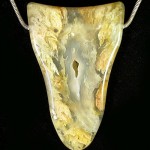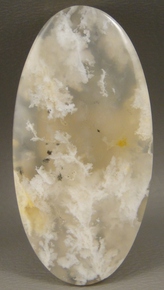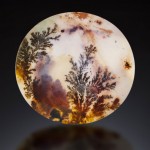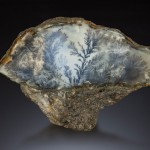Nine out of ten Americans suffer from headaches, some occasionally, some frequently. Some headaches are dull and throbbing, others cause debilitating pain and nausea. Jewelry makers are not immune and because of their work, may have more headaches than others.
You may take a pain pill and hope the pain goes away. However, some research (Duke University Evidence-Based Practice Center in Durham NC, in 2001) shows that chiropractic manipulation may be an effective treatment option for tension headaches and those that originate in the neck. (Not recommending treatment, here. Just saying there is an option for those who are interested.) The study found that chiropractic manipulation, for most patients, resulted in almost immediate improvement. Such treatment had significantly fewer side effect and longer lasting relief of tension-type headaches than use of a commonly prescribed medication. In addition, a 1995 study in the Journal of Manipulative and Physiological Therapeutics found that those who ceased chiropractic treatment after four weeks experienced a sustained therapeutic benefit in contrast to those who used a commonly prescribed medication.
Ninety-five percent of headaches are primary headaches—they are not caused by disease. The headache itself is the primary concern. These include tension, migraine, or cluster headaches. To relieve your mind, only 5 percent of headaches are warning signals caused by physical problems. (In other words, it’s probably not a brain tumor.)
Headaches have many causes or “triggers.” These may include foods, environmental stimuli (noise, lights, fumes, stress, etc., nothing, of course, that jewelers are affected by…) and/or behaviors (insomnia, excessive exercise, blood sugar changes, etc.). The greatest number of headaches are associated with muscle tension in the neck. This results from sedentary activities that are spent in one fixed position or posture. This causes increased joint irritation and muscle tension in the neck, upper back and scalp causing your head to ache.
So how can you reduce the chance you’ll get a headache?
- If you spend long hours at the bench–before a show or during the run up to Christmas—take a break every 30 minutes to an hour and stretch. The stretches should take your head and neck through a comfortable range of motion.
- Low impact exercise—walking and low-impact aerobics–may help relieve the pain associated with primary headaches. However, avoid heavy exercise if you’re prone to dull, throbbing headaches.
- Avoid teeth clenching which creates stress at the temporo-mandibular joints (TMJ) that connect your jaw to your skull. (Difficult when dealing with a tight deadline or demanding customer, but do your best.) TMJ irritation can lead to tension headaches. Upper teeth should never touch the lowers except when swallowing.
- Drink at least eight 8-ounce glasses of water a day to help avoid dehydration which can lead to headaches.
Avoid food triggers such as:
- Caffeine in chocolate, coffee, sodas, and cocoa. (No! Really? Yes, really.)
- Foods with high salt or sugar content (see comment above) which can cause migraines that result in sensitive to light, noise or abrupt movement.
- Alcoholic beverages that can dehydrate you and cause headaches.
- Some headache sufferers may want to avoid high-protein food, dairy, red meat. You’ll have to experiment.
Headaches are no fun and slow down your work. Anything that can keep them at bay is worth trying.




